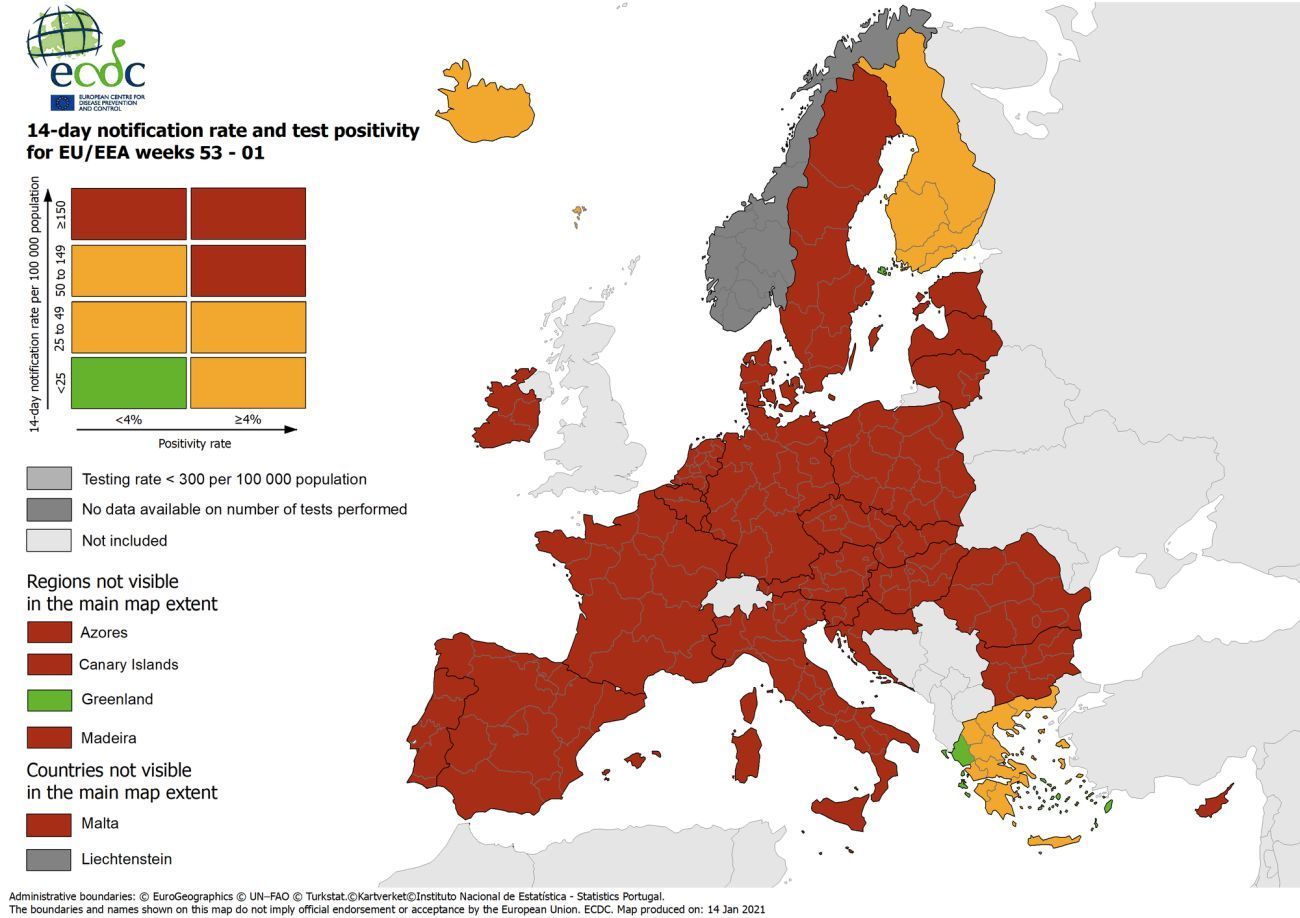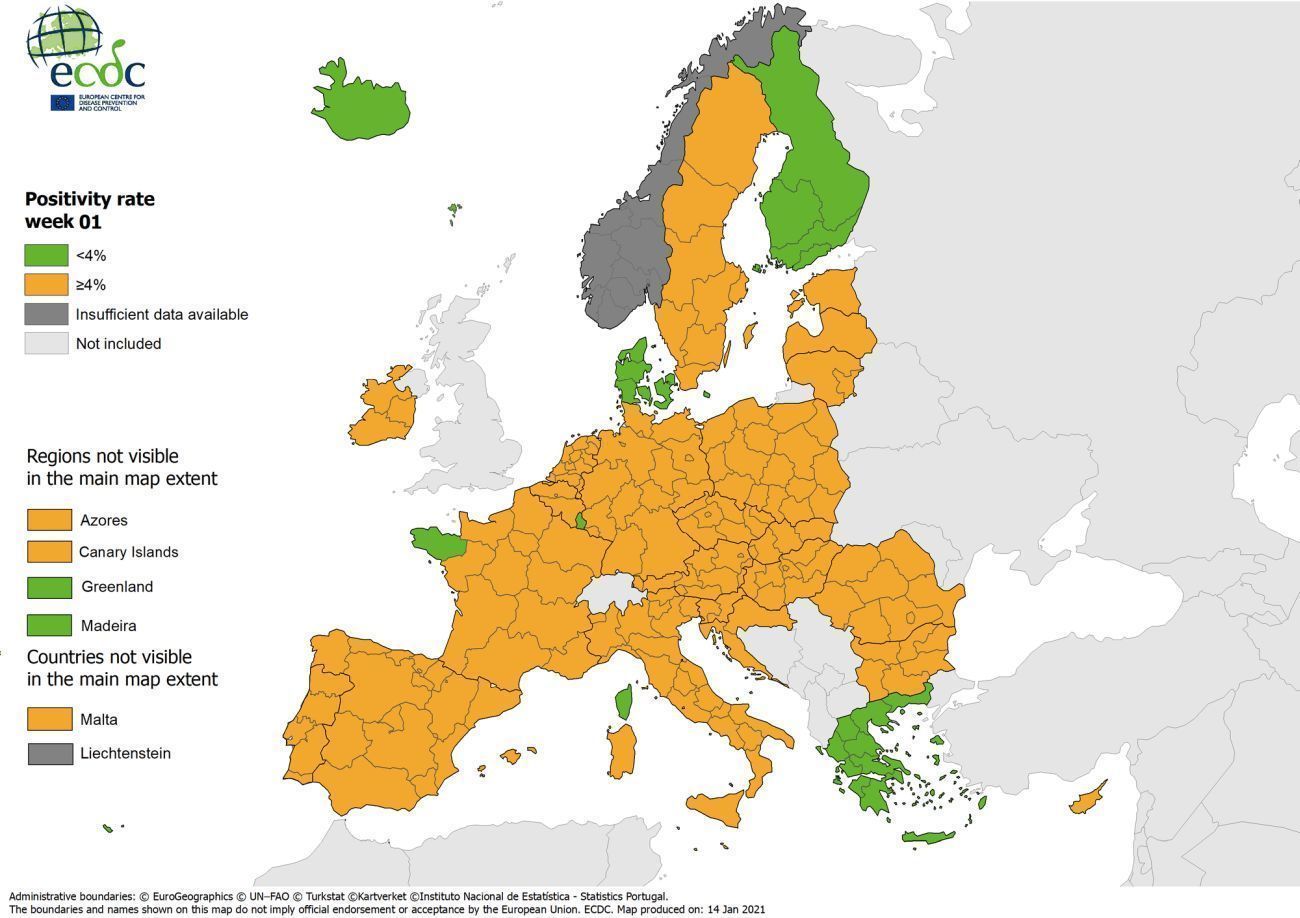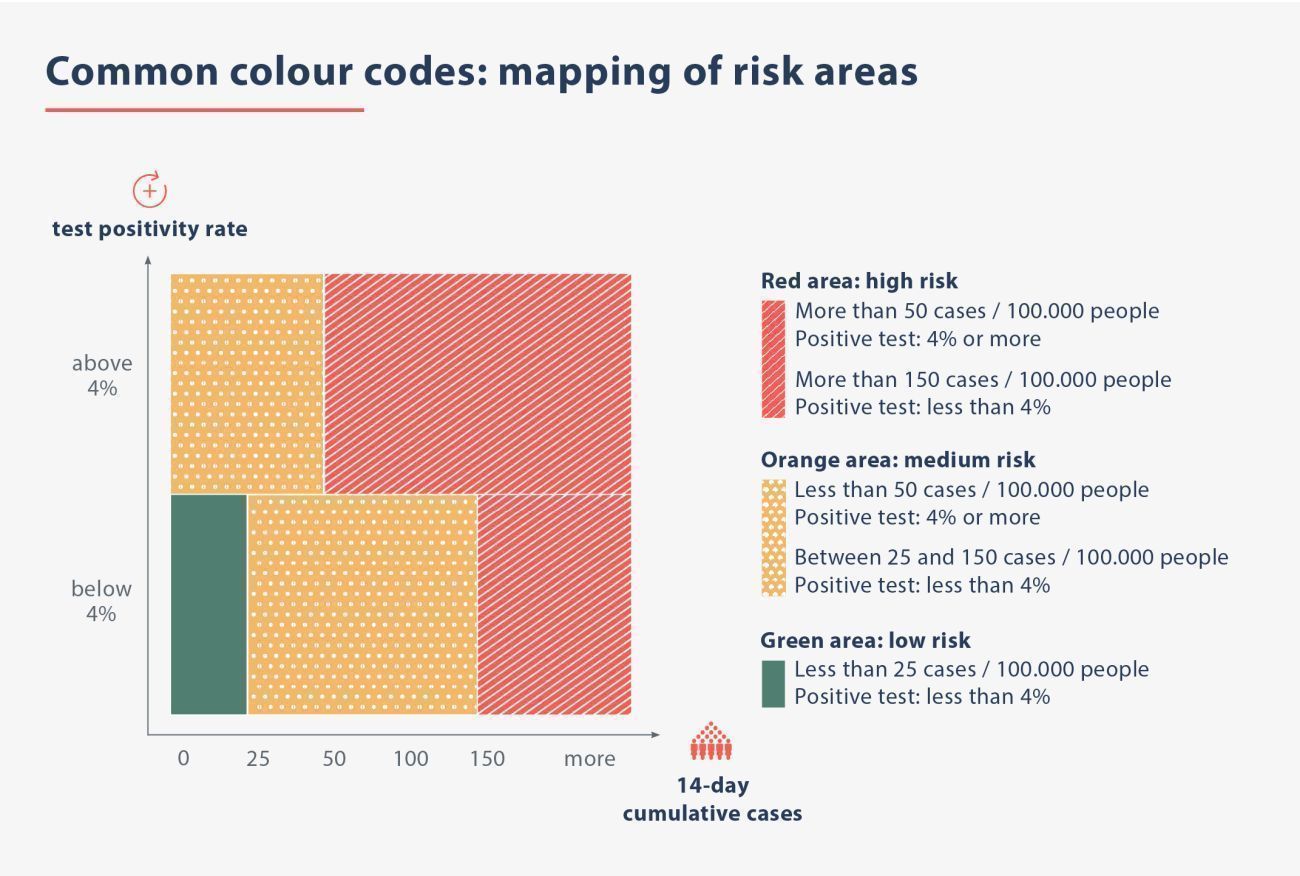
The updated color-coded coronavirus (Covid-19) map of the European Center for Disease Control and Prevention (ECDC) shows that the only “green” areas in Europe are in Greece.

The combined indicator map is based on criteria including the 14-day cumulative incidence rate, testing rate, and testing positivity rates.
According to the updated map for the January 1-14 period, while the vast majority of European countries have “red” (high risk) status, Greece is the only country that has “green” (low risk) areas: Epirus (northwestern Greece) along with the islands of the Ionian and the Aegean. The rest of Greece is “orange” (medium risk).
Moreover, on the ECDC map that is based on positivity rates (seen below), all of Greece appears “green” and most of Europe remains “orange”. For Greece, this means that the percentage of positive tests from all Covid-19 tests was less than 4 percent.
Updated every Thursday, the ECDC rankings include 30 countries and are part of the European Commission’s recommendation on a coordinated approach to the restrictions of free movement in response to the Covid-19 pandemic, which was approved by the Member States in October 13. It aims to provide data to help countries better coordinate their travel restrictions.
The weekly color-coded map shows the risk levels across the regions in Europe, based on local epidemiological data and by using a traffic light system.
Regions are indicated in the colors “green” (low-risk areas), “orange” (medium risk areas), “red” (high-risk areas), and “grey” (insufficient data).
The ECDC color-coded health map does not include data on the United Kingdom, Switzerland, the Balkan countries (except EU members), Ukraine, Belarus, and Russia.

